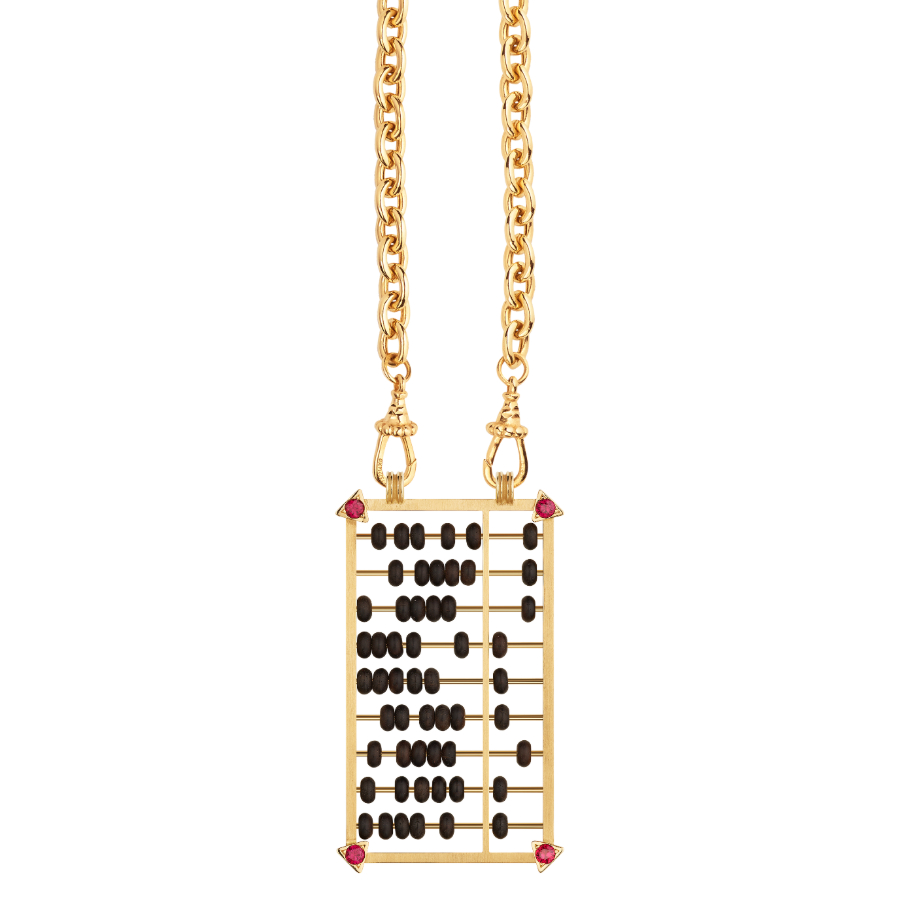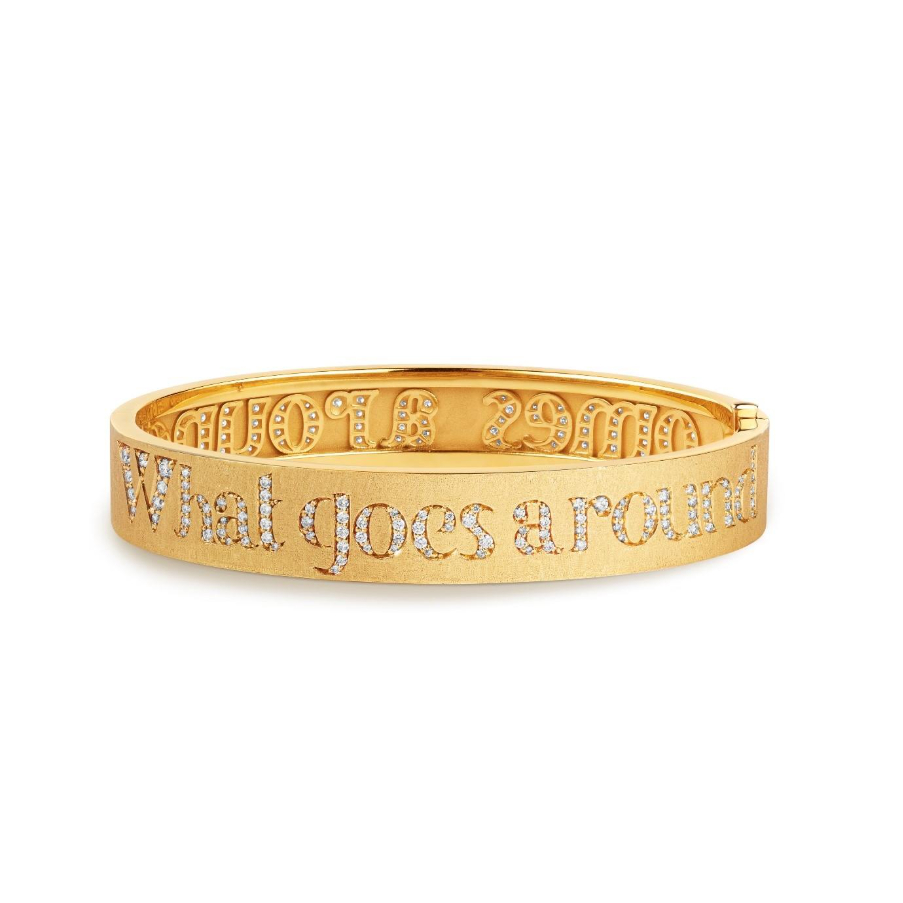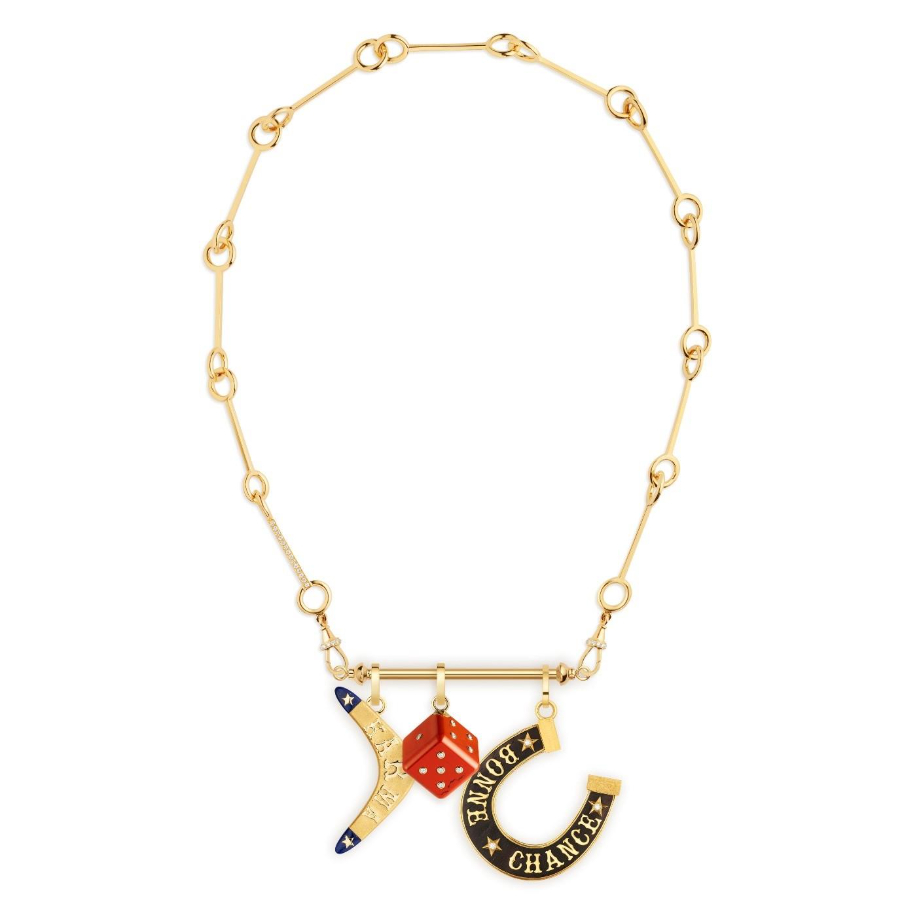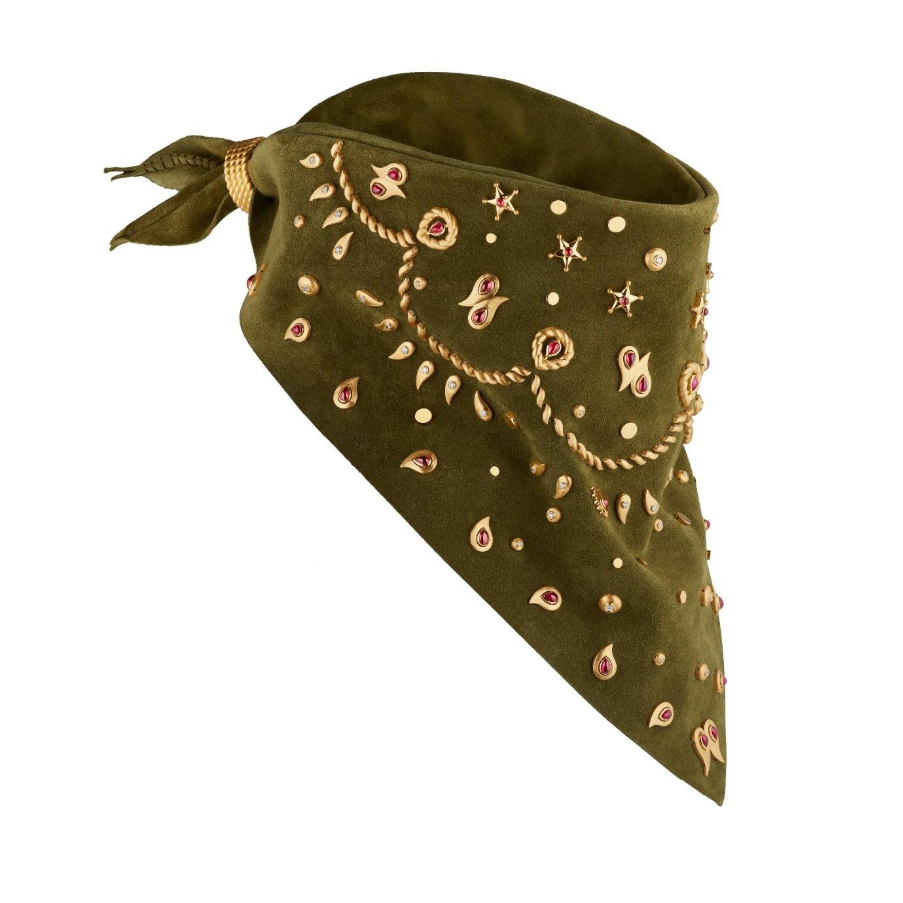Marie Lichtenberg’s jewels are anything but ordinary— in her hands, jewellery becomes more than adornment—it’s a memory, a message, a touch of magic. In short, they’re stories you wear.
A former fashion editor at French Elle, Marie turned her astute editorial eye towards design, creating pieces that pulsate with humour, nostalgia and emotion. Her aesthetic, equal parts Parisian chic and global wanderlust, was born from a memorable gold forçat chain gifted by her Martinican mother. That chain eventually became the turning point for Marie. It was a symbol of freedom that sparked her lifelong fascination with jewellery as modern heirloom.
From psychedelic enamel Love Lockets to satirical scapulars and diamond-dotted box rings, each piece is a universe — crafted by master artisans in gold, enamel, and gems, and infused with soul and wit. Whether it’s a locket that hides a secret, a charm that nods to pop culture, or a collaboration that turns the Magic 8 Ball into high art, Marie’s creations are deeply individualistic.
As a former fashion editor-turned-designer, how has your editorial eye shaped the way you build collections and tell stories through jewellery?
My editor’s eye has mainly trained me to think outside the box. In a world of standardised fashion, I had to free myself from what I had learned — to step away from trends and uniformity.
I took a different path.

You describe jewellery as something that “carries all the sentiment we wish to hand down to the next generation.” Can you share a specific moment when you witnessed one of your pieces becoming an heirloom for someone?
My brand is still in its early chapters. I haven’t yet had the privilege of witnessing one of my creations being passed down from one generation to the next. But I havealready seen how deeply people connect with their ML jewellery — how these pieces become part of their stories, their daily lives, their memories.
And I have no doubt that, over time, they’ll continue to carry these pieces with them through every stage of life.

The forçat chain from your mother sparked your entire journey. How does that symbolism of freedom continue to influence your design philosophy today?
The forçat chain is also a beautiful symbol of emancipation. I hold onto one guiding principle — to remain free and true to myself, no matter what comes my way. This rule applies to my creative process as well.
Despite commercial pressure, the rising cost of materials, and everything else that comes with this industry, I hold on to my freedom … the freedom to create beyond the boundaries and expectations imposed upon us.
Your work blends influence from Martinique, India, Catholic iconography, and pop culture. How do you decide which cultural or symbolic elements belong together in a single piece?
There are no decisions, only instinct.

You’re drawn to Indian crafts across the arts. What was your first impression of the country, and how has India’s artistry and culture shaped your design language over time? Do you work with Indian artisans?
In my early days in jewellery, India played a significant role in shaping my vision. I was fascinated by the Kundan technique, the art of enamelling on 24-karat gold.
There’s something completely unleashed, with no limits, in Indian jewellery craftsmanship — an incredible sense of extreme beauty, maximalism, poetry, and spirituality.
I still collaborate with wonderful Indian artisans on very specific pieces.
Over the past six years, we’ve embraced the idea of blending craftsmanship from all over the world — Italy, France, the US, Thailand, and Germany — to make our creations even more unique and distinctive.

You collaborate with “some of the most highly skilled craftspeople in the world”—from the Italian craftsmen behind the Magic Ball necklace to your partnership with Mattel. How do such collaborations influence and expand your creative vision?
Working with great masters is one of the most beautiful gifts this profession has to offer.
Collaborating with the best pushes you to surpass yourself in terms of design. Above all, it allows you to keep learning endlessly and to expand the limits of your own mind.
These are the people who make me grow. They are the true guides of this craft.
Artisans are the guardians of a heritage, of ancestral savoir-faire. The essence of luxury — the extraordinary heart of our profession — lies precisely there.
Can you take us through your creation process?
I don’t have a particular process. My ideas often come to me at night. Having ideas … that’s my job!
I’m lucky to have a wonderful team I can count on to bring the collections to life.
I create alone, but when it comes to production, we are a village.

The back of your pendants receives as much attention as the front. Why is this commitment to hidden beauty important to you, even when no one else might see it?
This is a beautiful question. Beauty is my way of healing myself from severe traumas. It’s my path of resilience.
Your secular scapulars reimagine traditional Catholic jewellery with four-leaf clovers, rockets, and psychedelic motifs. What drives your interest in transforming sacred symbols and making them universally accessible? Which symbol or motif in your collections has resonated most unexpectedly with your clients, and why do you think that is?
To me, the most important thing in life is to believe in something greater than ourselves.
It can be a higher being, an energy, or simply anything that gives a deeper meaning to our existence.
In challenging times, like the ones the world is facing today, I believe that a touch of spirituality, or dream, whatever name we give it, can bring comfort.
Sometimes, it’s enough to take refuge in simple things … objects that carry joy, tenderness, and a quiet sense of solace.
The heart motif remains a universally beloved symbol.

If you could design a piece for your teenage self—the girl who first received that forçat chain—knowing everything you know now, what would it be and what would it communicate?
A chain saying: “Don’t look back — you’re not going that way.” ❤️
Looking ahead, how do you see the idea of “jewellery as heirloom” evolving in the modern world, and where does Marie Lichtenberg fit into that future?
I believe the idea of jewellery as heirloom is transforming. It’s no longer just about passing down a physical object, but about transmitting emotion, intention, and spirit.
Today’s heirlooms are not necessarily grand or traditional; they are pieces that carry meaning, that tell the story of who we are and what we believe in.
At Marie Lichtenberg, we design jewels meant to live with you — to witness your moments, your loves, your journeys.
And one day, when they’re passed on, they’ll carry not only gold and gemstones, but the invisible imprint of a life well lived.

